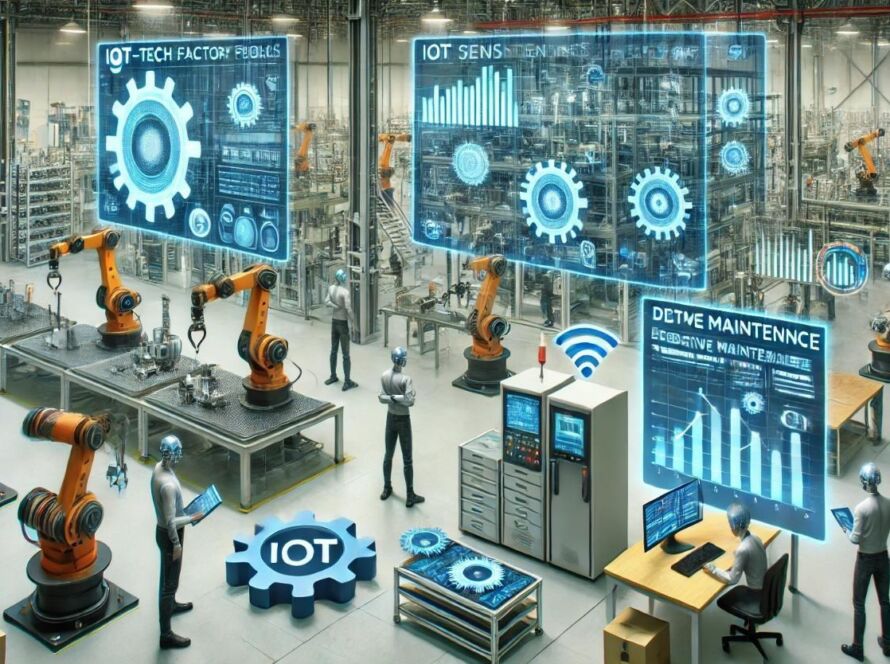Humanoid robots have long been a staple of science fiction, promising a future where machines seamlessly integrate into human society. That future is now becoming a reality. In recent years, advancements in artificial intelligence, robotics, and machine learning have given rise to a new generation of human-like robots that can walk, talk, interact, and even perform tasks previously reserved for humans. These robots are being developed for industries such as healthcare, manufacturing, customer service, and more, offering groundbreaking solutions to labor shortages and automation needs.
What Are Humanoid Robots?
Humanoid robots are machines designed to resemble and function like humans. They typically have a head, torso, arms, and legs, mimicking human anatomy. Unlike traditional industrial robots, which are confined to specific tasks, humanoid robots aim to interact with the world as humans do—walking upright, recognizing faces, responding to verbal commands, and even exhibiting social behaviors.
Latest Advancements in Humanoid Robotics :
AIREC – Japan’s Robotic Caregiver
Japan, facing an aging population and a declining workforce, has been at the forefront of humanoid robot development. One of the latest innovations is AIREC, a humanoid robot designed to assist with elderly care. AIREC can help reposition bedridden patients, perform household chores like cooking and laundry, and even engage in basic conversation to provide companionship. The goal is to deploy these robots by 2030, potentially easing the burden on caregivers and improving the quality of elderly care.
Figure 02 – Revolutionizing Labor with AI-Driven Automation
Figure, a U.S.-based robotics company, has recently unveiled Figure 02, a humanoid robot designed to take on 80% to 90% of manual labor tasks. Through AI-driven learning, these robots can work alongside humans in warehouses, factories, and other labor-intensive environments. With a partnership with BMW, Figure 02 is already being tested in manufacturing lines, aiming to replace human workers in repetitive and physically demanding jobs.

Protoclone – Advancements in Synthetic Musculature
Clone Robotics has introduced Protoclone, a humanoid robot featuring over 1,000 artificial muscles that replicate human movement with unprecedented accuracy. Unlike conventional humanoid robots that rely on motors and rigid mechanisms, Protoclone’s synthetic muscles allow it to perform delicate and precise movements similar to a real human. This technology holds promise for applications requiring fine motor skills, such as surgery and rehabilitation.
Ameca – The World’s Most Expressive Robot
Developed by Engineered Arts, Ameca is widely regarded as the most expressive humanoid robot to date. With an advanced AI system, Ameca can recognize emotions, respond to human interactions naturally, and engage in meaningful conversations. It is being used for customer service, education, and research purposes to explore how humans and robots can coexist more seamlessly.
Applications of Humanoid Robots Across Industries :
Healthcare
- Assisting in elderly care and rehabilitation (e.g., AIREC helping caregivers with physically demanding tasks).
- Performing delicate surgeries using AI-assisted robotic hands.
- Providing companionship and mental health support for patients suffering from loneliness.
Manufacturing and Logistics
- Assisting in warehouse operations and automating labor-intensive tasks.
- Reducing workplace injuries by handling hazardous materials.
- Increasing production efficiency with tireless and error-free performance.
Entertainment and Education
- Teaching students in interactive learning environments.
- Performing in theaters, theme parks, and live shows.
- Providing human-like AI companions for research and development purposes.
Challenges and Ethical Concerns :
Despite their potential, humanoid robots face several challenges:
- High Costs: The technology is expensive, making widespread adoption difficult.
- Job Displacement: Concerns about robots replacing human workers remain a critical issue.
- Data Privacy: AI-powered robots require vast amounts of data, raising security concerns.
- Ethical Dilemmas: The moral implications of AI-powered humanoids blurring the line between humans and machines must be addressed.
The Future of Humanoid Robotics :
As AI and robotics continue to evolve, humanoid robots are expected to play a more significant role in society. In the coming years, we can anticipate:
- More Affordable and Accessible Models: Making humanoid robots a common sight in homes and businesses.
- Advanced AI Capabilities: Robots will become more intuitive, capable of deeper learning, and exhibit near-human intelligence.
- Regulations and Ethical Frameworks: Governments and institutions will introduce laws to ensure ethical AI usage and prevent misuse.
Conclusion
The rapid advancements in humanoid robotics mark an exciting shift in technology and automation. With companies like Figure, Clone Robotics, and Engineered Arts pushing the boundaries of AI-driven machines, the world is on the cusp of a revolution where humans and robots coexist seamlessly. While challenges remain, the future of humanoid robots looks promising, offering solutions to some of society’s most pressing issues, from labor shortages to healthcare support.
Humanoid robots are no longer a distant dream—they are here, and they are ready to redefine the way we work, live, and interact with technology.



